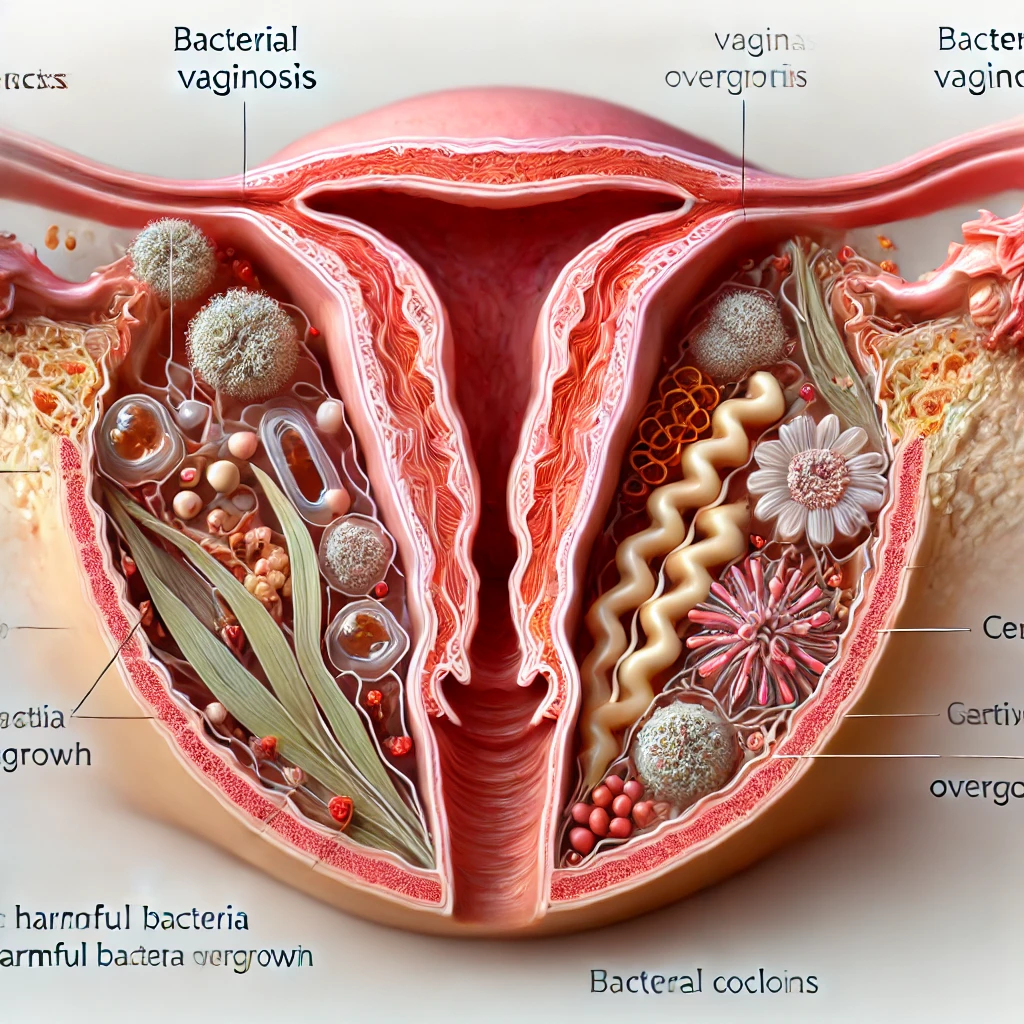Understanding and Managing Bacterial Vaginosis
Bacterial Vaginosis (BV) is a common vaginal infection affecting many women worldwide. It occurs when there is an imbalance in the natural bacteria found in the vagina. While it is not a sexually transmitted infection, sexual activity can increase the risk of developing BV. Understanding the causes, symptoms, and treatment options for BV is crucial for maintaining reproductive health.
Causes and Symptoms
BV results from an overgrowth of certain bacteria in the vagina, disrupting the natural balance. Common causes include multiple sexual partners, douching, and an imbalance in vaginal pH. Symptoms of BV can vary but often include a thin, grayish-white vaginal discharge with a strong fishy odor, vaginal itching, and burning during urination.
Diagnosis and Treatment
Diagnosing BV typically involves a pelvic examination and testing a sample of vaginal discharge. Treatment usually consists of antibiotics, either oral or topical, prescribed by a healthcare provider. It is essential to complete the full course of treatment to prevent recurrence.
Prevention
Preventive measures include avoiding douching, limiting the number of sexual partners, and using condoms. Maintaining good vaginal hygiene and wearing breathable cotton underwear can also help reduce the risk of BV.
Consult Virtual Doctors for Professional Advice
For personalized advice and treatment, consider consulting a healthcare professional through the Virtual Doctors App (www.virtualdoctors.ng). This platform offers convenient and confidential consultations with qualified doctors, ensuring you receive the best care for managing and preventing BV.
Pelvic Inflammatory Disease: Causes, Symptoms, and Treatments
Pelvic Inflammatory Disease (PID) is a severe infection of the female reproductive organs. It often results from untreated sexually transmitted infections (STIs), such as chlamydia and gonorrhea. PID can lead to significant complications, including infertility, if not promptly diagnosed and treated.
Causes and Symptoms
PID is usually caused by bacteria ascending from the vagina and cervix to the upper reproductive organs. Common symptoms include lower abdominal pain, fever, unusual vaginal discharge with an unpleasant odor, painful intercourse, painful urination, and irregular menstrual bleeding.
Diagnosis and Treatment
Diagnosing PID involves a combination of a pelvic exam, analysis of vaginal discharge, and sometimes ultrasound or other imaging tests. Treatment typically includes a course of antibiotics. In severe cases, hospitalization may be necessary. Early treatment is crucial to prevent long-term complications such as chronic pelvic pain, ectopic pregnancy, and infertility.
Prevention
Preventing PID involves practicing safe sex by using condoms, getting regular STI screenings, and ensuring prompt treatment of any detected infections. Limiting the number of sexual partners and maintaining good genital hygiene are also effective preventive measures.
Consult Virtual Doctors for Professional Advice
For early diagnosis and treatment of PID, consult a healthcare professional via the Virtual Doctors App (www.virtualdoctors.ng). This service provides access to experienced doctors who can guide you through managing and preventing PID effectively.
Download Virtual Doctors App on Google Play Store now by clicking here and book an appointment with a specialist.
Using iOS or PC? Visit www.virtualdoctors.ng/account to schedule your appointment today.
